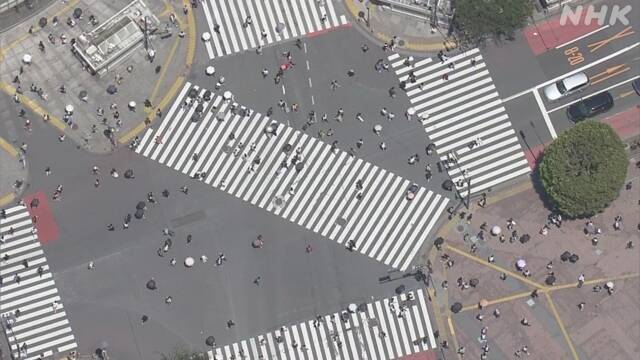The number of people in Tokyo on the 21st increased both during the day and at night compared to the average of the period when the third state of emergency was declared from the end of April.
NHK used the location information data of mobile phones collected by the IT-related company "Agoop" with the permission of the user in a form that does not identify individuals, and investigated the number of people at major points.
First, we will compare the number of people in Tokyo on Wednesday, 21st, with the average of weekdays from April 25th to June 20th, when the third state of emergency was declared.
According to this, the area near the Shibuya Scramble crossing increased by 21% during the day and 43% at night, and near Tokyo Station increased by 3% during the day and 38% at night.
Then compare with the weekday average for the previous 4 weeks.
In Tokyo, 4% during the day and 16% at night near the Shibuya Scramble crossing, -10% during the day and 20% at night near Tokyo Station.
On the other hand, the number of people in Okinawa, whose state of emergency was extended, decreased significantly to minus 30% during the day and minus 43% at night near the prefectural office station in Naha city.
In addition, the number of people in Saitama, Chiba, Kanagawa, and Osaka on the 21st, when priority measures such as prevention of spread were extended, was -1% during the day, 36% at night, and Chiba Station near Omiya Station in Saitama City. In the vicinity, it was 30% during the day, 62% at night, -9% during the day near Yokohama Station, 6% at night, 7% during the day and 21% at night near Osaka / Umeda Station.

